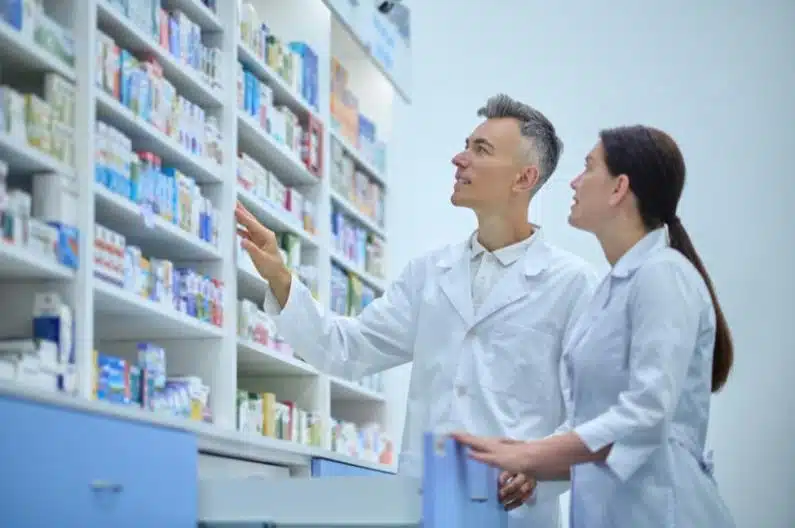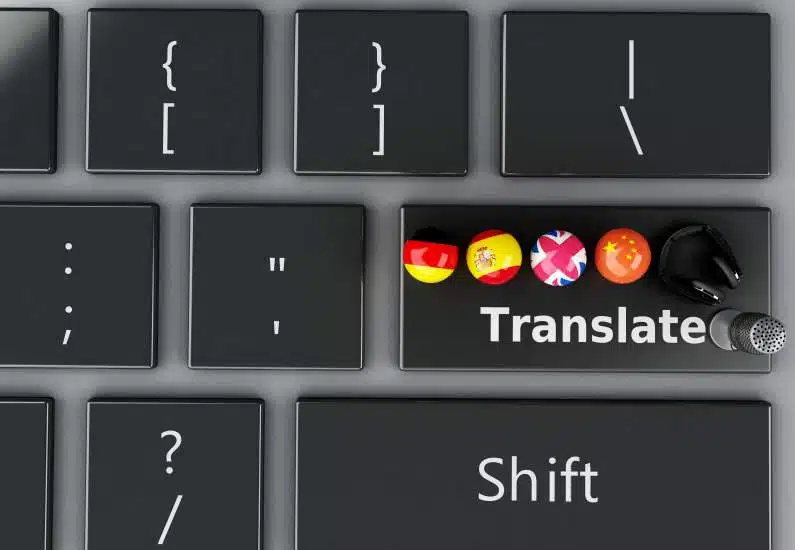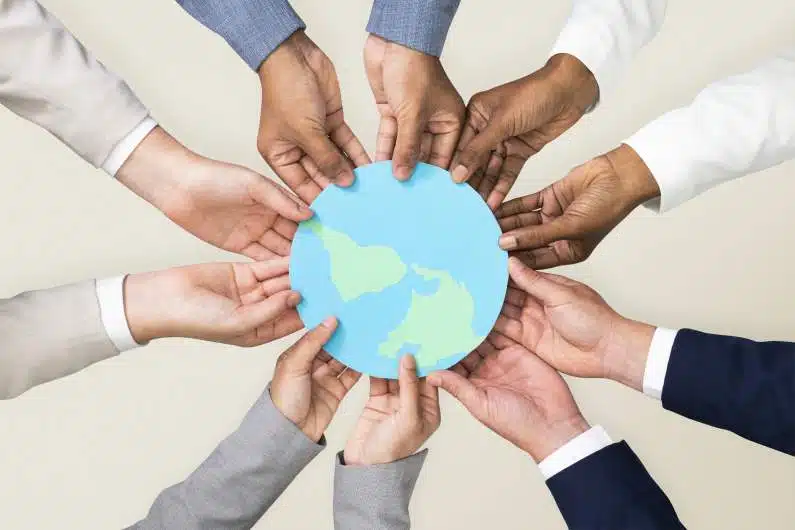Pharmaceutical companies benefit from multilingual content because it helps them to expand into global markets.
It is a strategic move for many pharmaceutical companies aiming to grow their customer base, boost revenues, and diversify their product offerings.
One of the most effective and essential ways to achieve international reach is not only through translation but the localization of content, including drug labels, clinical trial data, and regulatory documents.
It is important to note that translation is not merely converting words from one language into another; it’s about adapting the content in a culturally and contextually appropriate manner for each specific market.
In doing so, pharmaceutical companies can ensure that their products are not only understood but also trusted and embraced by local healthcare providers, regulators, and consumers.
This means that translation serves as a necessity in facilitating that pharmaceutical companies benefit from multilingual content.
It makes their products more accessible and meets the needs of local regulations. In this post, we will discuss how pharmaceutical companies benefit from multilingual content and explore the specific aspects which make it so valuable for global expansion.
Can Multilingual Drug Information Benefit Pharmaceutical Companies?
To make an impact on new markets, pharmaceutical companies have to ensure that they can communicate with the people in the local languages of those markets.
This is why translation within the pharmaceutical industry is very impactful and necessary.
The process goes beyond simple translation and extends to understanding and respecting the cultural and regulatory norms and development of each region.
This is particularly vital when it comes to drug information, which is often dense, complex, and highly regulated.
When essential content is translated and localized correctly, pharmaceutical companies can dramatically extend their market reach and influence, especially by getting noticed in the international community.
8 Advantages of Multilingual Drug Information
- Enhanced Customer Understanding: Having drug information available in multiple languages enables a more profound understanding of the product among healthcare professionals and patients alike.
- Improved Patient Safety: Accurate translation guarantees that important data about drug usage, side effects, and contraindications are clearly understood, reducing the risk of misuse or adverse reactions.
- Regulatory Compliance: Providing translated drug information helps in complying with local and international regulations, as many countries mandate that drug information be available in the native language.
- Increased Market Penetration: Multilingual content allows pharmaceutical companies to reach a broader audience, increasing the potential for market penetration and higher sales.
- Credibility and Trust: Offering drug information in a person’s native language can significantly enhance the credibility and trustworthiness of the pharmaceutical company in new markets.
- Competitive Advantage: Companies that offer multilingual drug information are better positioned to compete in diverse markets, particularly where there are strong local competitors.
- Efficient Distribution: Multilingual drug labels and information sheets allow for smoother distribution processes, as there’s no need to produce different product batches for different linguistic regions.
- Global Collaboration: Translated clinical trial data can invite review and input from global experts, thereby enriching the quality of the research.
Pharmaceutical companies benefit from multilingual content by not just fulfilling a regulatory requirements but also contributing to improved healthcare outcomes.
They gain invaluable knowledge from the practice of producing multilingual content. This strategy not only meets regulatory demands but also contributes significantly to enhancing health outcomes.
By doing so, they effectively broaden their consumer base, offering the right support where it’s needed. However, managing this effectively requires insight into the field and an understanding of cultural nuances, ensuring messages are conveyed accurately. Success in this area could well transform the life of a global audience, meeting the ever-growing demand for accessible healthcare information.
Thus, companies should find ways to integrate such approaches into their management practices, aiming for a successful overreach in their field.
Types of Pharmaceutical Information to Consider Translating
Drug Labels
Drug labels contain crucial information, including dosages, side effects, and contraindications.
When pharmaceutical companies enter new markets, this information must be translated accurately and effectively for the local population.
Tailored drug labels not only ensure patient safety but also help in building trust among local healthcare providers.
Clinical Trial Data
Clinical trials are the foundation of any new drug approval process. Making trial data available in multiple languages encourages a broader range of participation and helps in generating more comprehensive results.
It also allows professionals around the world to review the data, which can lead to quicker adoption of new treatments.
Regulatory Challenges
Entering a new market often involves navigating a complex web of regulations and guidelines, particularly when it comes to healthcare and pharmaceuticals.
Multilingual content can help overcome some of these challenges, as many countries require translated or bilingual information on the bottle or box of medication, reinforcing why medical translation is essential.
FDA and EMA Guidelines for a Global Pharmaceutical Footprint
The U.S. Food and Drug Administration (FDA) and the European Medicines Agency (EMA) are two of the most rigorous and highly regarded regulatory agencies globally.
They set the bar for pharmaceutical quality, safety, and efficacy.
Pharmaceutical companies aiming to market their products in the United States or European Union must align with these agencies’ strict guidelines.
Having multilingual versions of essential documents, protocols, and submissions significantly streamlines the approval process and makes ongoing compliance more able, aiding pharmaceutical companies to benefit from multilingual content in the global market.
Key Benefits of Translating FDA and EMA Guidelines:
- Accelerated Approval Process: With readily available translated documents, pharmaceutical companies can speed up the often long-winded approval process, as there is no lag time in comprehension or potential misunderstandings due to language barriers.
- Enhanced Collaboration: Translated guidelines facilitate better communication and collaboration with local partners, manufacturers, and healthcare providers who may not be fluent in English.
- Legal Safeguards: Comprehensive and accurate translation can serve as a legal safeguard, reducing the risk of non-compliance due to misunderstanding or misinterpretation of regulatory guidelines.
- Global Standardization: Translated versions of FDA and EMA guidelines help in maintaining consistency in product quality and safety measures across different markets.
- Local Market Confidence: Understanding and strictly following FDA and EMA guidelines in localized languages can increase trust among local market regulators and consumers.
- Resource Optimization: Having translated guidelines can help in efficient resource allocation as companies can use them as a reference across different departments and for training new staff.
- Audit Preparedness: Translated regulations and guidelines ensure that companies are better prepared for audits, as they can easily produce required documents in the language that the auditors understand.
Compliance With Pharmacopoeias
Pharmacopoeias, or official publications containing a list of medicinal drugs and their effects, also have specific guidelines that vary from country to country.
A translation that takes into account the nuances of each pharmacopoeia allows for more accurate alignment with regulatory requirements, ensuring that drugs meet the necessary quality standards.
Helping Pharmaceutical Companies Benefit From Multilingual Content
Multilingual content is a necessity for pharmaceutical companies aiming to make a global impact.
From broadening market reach with tailored drug information to overcoming regulatory hurdles, translated and localized content plays a crucial role in the success of pharmaceutical companies worldwide.
By investing in high-quality translations with a reputable and professional translation agency, these companies not only ensure compliance but also build trust among healthcare providers and patients, thereby securing a more sustainable and expansive future.
For further details, please check out the FAQ section below.
FAQs:
Why is multilingual content important for pharmaceutical companies?
- Multilingual content allows pharmaceutical companies to reach a broader audience and comply with international regulations.
How does translating drug labels benefit local markets?
- Translating drug labels ensures that information is accessible and culturally relevant to local populations.
What are the challenges of pharmaceutical translations?
- Challenges include maintaining accuracy, cultural relevance, and compliance with international regulatory standards.





